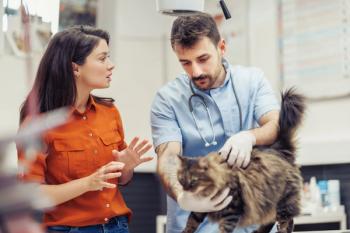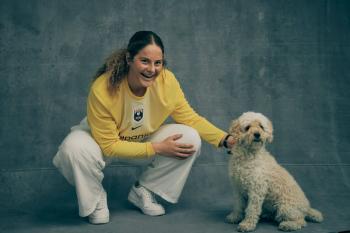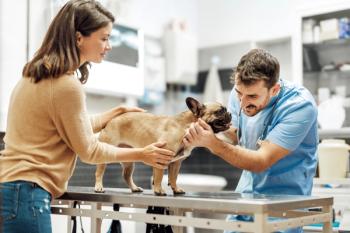
Market Watch: 5 steps to a stellar first impression with veterinary clients
You don't get a second chance to make a first impression with your veterinary clients – so you better do it well.
I always tell people that I'm not very smart, so I make it a point to be around smart people and listen when they speak. I believe there's not much that is new in the world—just new ways to present and apply what came before. I'm continually searching for better ways to make what I see as critical points. We all know the old saw, "You never get a second chance to make a first impression." I recently came across a great variation of that quote: "It takes a while for people to decide to do business with you, but it only takes a moment for them to decide not to." This got me thinking about the moment a relationship or a transaction begins—it starts with hello.
Experts say people form impressions of others within 30 seconds. Well, that may be if they give it a little thought, but according to Malcolm Gladwell in "Blink: The Power of Thinking Without Thinking," such a decision may take just two seconds. Can you say, "instantly?" It takes far longer and more conscious awareness to change those opinions, so we need to get out of the blocks pretty quickly when we meet a new client.
There are five steps that will at least get you 30 seconds to make an impression instead of two. Here are some simple ways to help you get more favorable odds.
1. GREET THEM.
Welcome clients with a sincere greeting that is comfortable and genuine. A simple "good morning" is far more natural than hearing your receptionist say, "A very gracious good afternoon." People can smell phony at 20 paces.
2. SHAKE HANDS.
People want to respect and be respected by the people they do business with. The handshake expresses a desire to connect. There are suggested protocols for a handshake to be welcoming but not threatening. It should be firm. I have a colleague whose handshake feels like a freshly washed gym sock, and he is about as sincere. The handshake should be brief, generally two to three seconds. Shorter than that and it seems perfunctory, much longer than that and it's uncomfortable. It should not be a pump handle motion. You are not there for water.
3. SMILE AND MAKE EYE CONTACT.
Making eye contact conveys interest in the person. How long should you maintain eye contact? It should be long enough for you to notice the person's eye color. Reestablishing eye contact frequently sends a message of sincerity.
4. USE NAMES.
"Welcome, Mrs. Johnson. I'm Dr. Paul." This imparts a degree of familiarity and personal connection.
5. ASK QUESTIONS.
It can be as simple as, "How are you?" or "What brings you in today?" This breaks the ice. Ask questions about their family, other pets, even the weather. This gives people a chance to talk about themselves, and we all like to talk about ourselves.
Have you ever walked into an office, a bank or a store and gotten the very real impression that the employees were too busy for you? Did you feel like you were bothering them and felt ignored? How can we guard against that experience for our clients? There is a guideline people refer to as the 15/5 rule. It's a part of customer service training in nice hotels and fine restaurants, and it's time we apply it to our veterinary practices.
Here's how it works: When someone approaches you, acknowledge that person by the time he or she is 15 feet away from you. Look up from what you're doing, smile, wave, nod or somehow acknowledge that you know that person is there. People want to know they were expected on some level and that you're glad to see them. Then, when that person is five feet away, greet him or her. Say, "Hello" or "Welcome," or whatever feels genuine. Then see the steps above to build comfort and rapport. It's simple courtesy. Watch for this experience and feel the difference when it happens from when it doesn't.
Dr. Paul is a veterinary consultant and a founding member and former executive director/CEO of the Companion Animal Parasite Council. He has served as president of the American Animal Hospital Association. He lives in Anguilla in the British West Indies.
Newsletter
From exam room tips to practice management insights, get trusted veterinary news delivered straight to your inbox—subscribe to dvm360.






